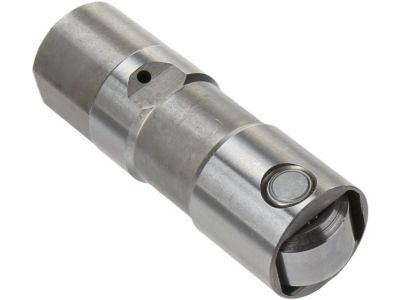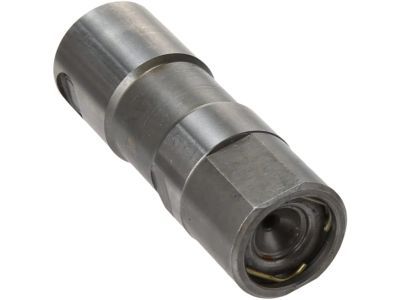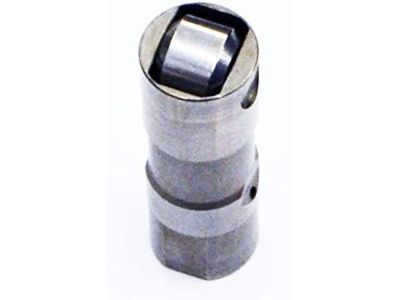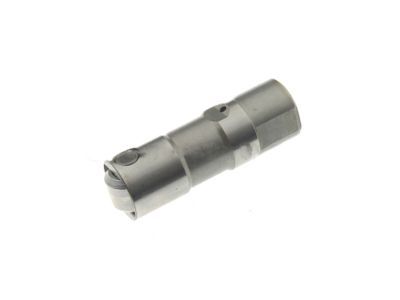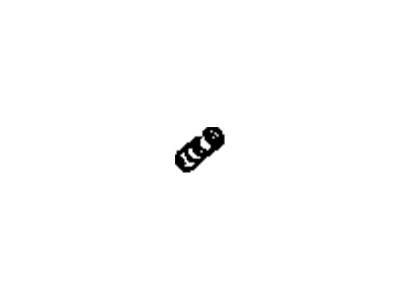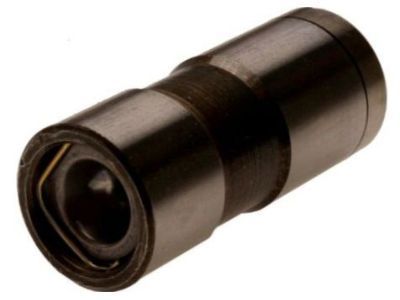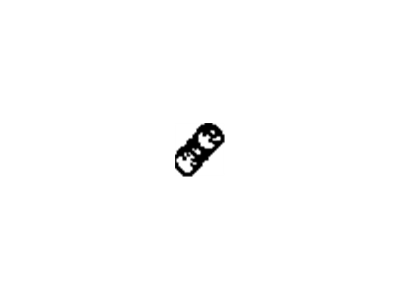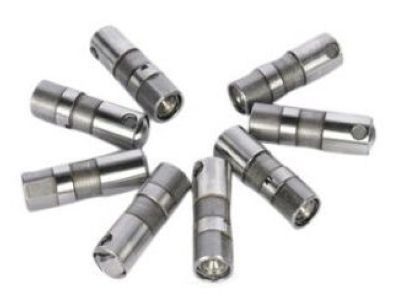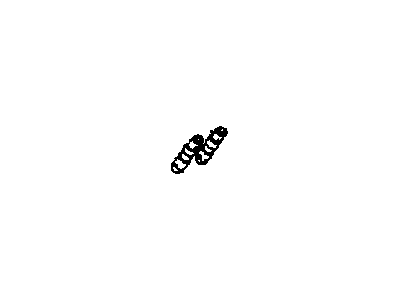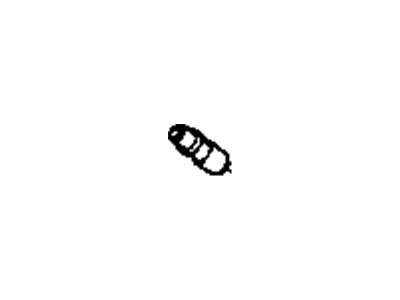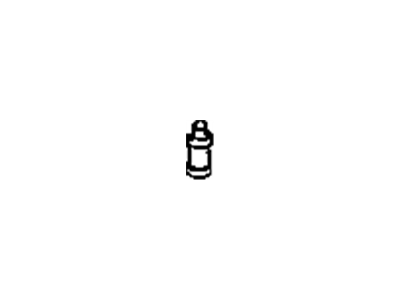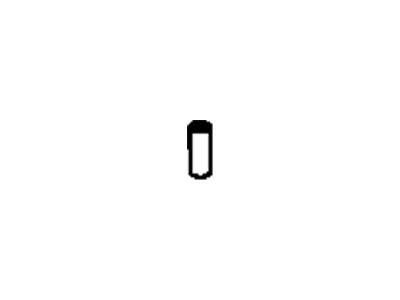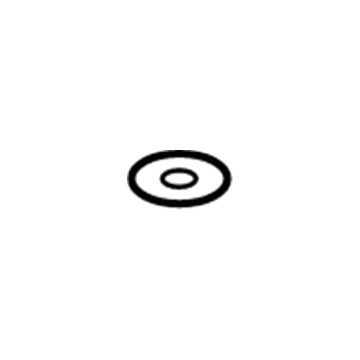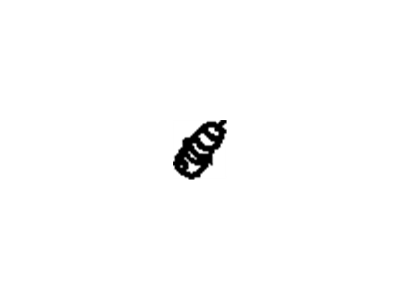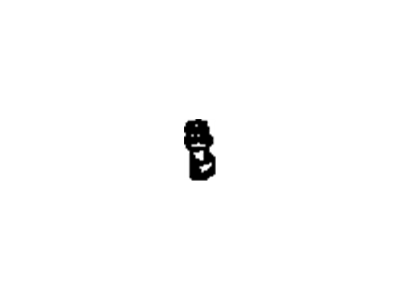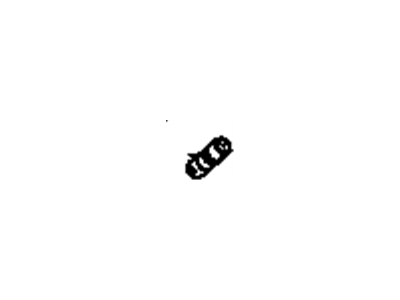
My Garage
My Account
Cart
Genuine Pontiac Lash Adjuster
Lash Adjuster Lifter- Select Vehicle by Model
- Select Vehicle by VIN
Select Vehicle by Model
orMake
Model
Year
Select Vehicle by VIN
For the most accurate results, select vehicle by your VIN (Vehicle Identification Number).
76 Lash Adjusters found
Pontiac Lifter,Valve
Part Number: 17122490$37.31 MSRP: $61.75You Save: $24.44 (40%)Ships in 1-2 Business DaysProduct Specifications- Other Name: LIFTER, Engine Valve Lifter; Valve Lifter
- Replaces: 05234670, 5234670
Pontiac Lifter,Valve
Part Number: 5232720$14.27 MSRP: $23.93You Save: $9.66 (41%)Ships in 1-2 Business DaysProduct Specifications- Other Name: LIFTER, Engine Valve Lifter; Push Rod, Valve Lifter
Pontiac Lifter Assembly, Vlv (Non Afm)
Part Number: 12698945$30.71 MSRP: $50.82You Save: $20.11 (40%)Ships in 1-2 Business DaysProduct Specifications- Other Name: Valve Lifter
- Replaces: 12648846, 12576400
Pontiac Lifter,Valve
Part Number: 24438148$5.24 MSRP: $8.34You Save: $3.10 (38%)Ships in 1-3 Business DaysProduct Specifications- Other Name: LIFTER, Engine Valve Lifter
- Product Specifications
- Other Name: Valve Lifter
- Replaced by: 12740071
- Replaces: 12639516, 12680871, 12571595, 12632143, 12619820, 12645725, 12569256
Pontiac Lifter,Valve
Part Number: 5234890$43.70 MSRP: $72.34You Save: $28.64 (40%)Ships in 1-2 Business DaysProduct Specifications- Other Name: LIFTER, Engine Valve Lifter; Valve Lifter
Pontiac Lifter Assembly, Valve
Part Number: 5234530$45.61 MSRP: $75.50You Save: $29.89 (40%)Ships in 1-2 Business DaysProduct Specifications- Other Name: LIFTER, Engine Valve Lifter; Valve Lifter
Pontiac Adjuster, Hydraulic Valve Lash
Part Number: 5233315$20.74 MSRP: $34.33You Save: $13.59 (40%)Ships in 1-2 Business DaysProduct Specifications- Other Name: ADJUSTER, Engine Valve Lifter; Valve Lifter
- Product Specifications
- Other Name: LIFTER, Engine Valve Lifter; Valve Lifter
Pontiac Lifter,Valve
Part Number: 5234200$13.31 MSRP: $21.24You Save: $7.93 (38%)Ships in 1-3 Business DaysProduct Specifications- Other Name: LIFTER, Engine Valve Lifter; Valve Lifter
- Product Specifications
- Other Name: LIFTER, Engine Valve Lifter; Valve Lifter
Pontiac ADJUSTER ASM-HYD VLV LASH
Part Number: 12686787$14.27 MSRP: $23.63You Save: $9.36 (40%)Ships in 1-2 Business DaysProduct Specifications- Other Name: Filler Cap O-Ring, Valve Lifter
- Replaces: 12572638, 24100005
Pontiac Lifter,Valve
Part Number: 17120735$37.81 MSRP: $60.30You Save: $22.49 (38%)Ships in 1-2 Business DaysProduct Specifications- Other Name: LIFTER, Engine Valve Lifter; Valve Lifter
Pontiac Lifter,Valve
Part Number: 17120070$21.57 MSRP: $34.39You Save: $12.82 (38%)Ships in 1-2 Business DaysProduct Specifications- Other Name: LIFTER, Engine Valve Lifter; Valve Lifter
- Replaces: 17102014
Pontiac Lifter,Valve
Part Number: 17120090$37.02 MSRP: $61.26You Save: $24.24 (40%)Ships in 1 Business DayProduct Specifications- Other Name: LIFTER, Engine Valve Lifter; Valve Lifter
Pontiac Lifter,Valve
Part Number: 94858927$13.94 MSRP: $22.23You Save: $8.29 (38%)Ships in 1-2 Business DaysProduct Specifications- Other Name: LIFTER, Engine Valve Lifter
Pontiac Lifter Asm,Valve
Part Number: 19205465$15.46 MSRP: $24.65You Save: $9.19 (38%)Ships in 1-2 Business DaysProduct Specifications- Other Name: LIFTER, Engine Valve Lifter
- Replaces: 94858923
Pontiac LIFTER ASM-VLV
Part Number: 12721201$64.69 MSRP: $103.19You Save: $38.50 (38%)Ships in 1-3 Business Days- Product Specifications
- Other Name: LIFTER, Engine Valve Lifter
| Page 1 of 4 |Next >
1-20 of 76 Results
Pontiac Lash Adjuster
If you're searching for OEM Pontiac Lash Adjusters, look no further. Our website boasts an extensive inventory of genuine Pontiac Lash Adjusters, all available at competitive prices online. Every part we offer comes with a manufacturer's warranty. In addition, we provide a straightforward return policy and rapid delivery services, making your shopping experience a breeze.
Pontiac Lash Adjuster Parts Questions & Experts Answers
- Q: How can a noisy lash adjuster be isolated and repaired in V6 engine on Pontiac Fiero?A:A noisy lash adjuster can be isolated while the engine is idling by holding a length of hose or tubing against each valve and listening at the other end or removing the rocker arm cover and feeling for shock on each valve spring retainer if a valve adjuster is bad. If adjustment is correct, one of the reasons for noise is dust between the plunger and the adjuster body. For one, locate and take off the rocker arm cover as well as the intake manifold, and next on, loosen the rocker arm nut and swivel the rocker arm in an anti-clockwise direction until you can pull out the pushrod. To remove the adjuster, one is encouraged to use a special hydraulic tool called the adjuster removal tool or utilize a scribe to push the adjuster upwards but not apply any tool on the outside will damage it. Return the adjusters to their original positions for replacement; it is often easier to install a new adjuster than to repair a defective one due to the fact that internal components of an adjuster are not available in the market. Still, some degenerative adjusters may return to normal operation by disassembling and cleaning the dirty ones. During the installation of the adjusters, the latter must be replaced in their original bores and must be lubricated using moly-base grease or engine assembly lube for additional measures, while the rest of the steps is to follow the reverse procedure of removal.
- Q: How can a noisy valve lash adjuster be isolated and how to removal and inspection in V8 engine on Pontiac Firebird?A:By using a length of hose or tubing near to the position of each valve while standing away from the engine and listening at the other end of the tube a noisy valve lash adjuster can be isolated when the engine is idling. If adjustment is properly done, then the main causes of noisy valve lash adjuster are a worn out adjuster foot and camshaft lobe or worn in or contaminated internal parts of the valve lash adjuster. For 1986 and previous models, remove the rocker arm covers and the intake manifold, then use a wrench to slacken the rocker arm nut and move the rocker arm in an anti-clockwise position to the direction of the push rod. Take out the pushrod, and if the mechanic has removed more than one, they should be arranged in a systematic manner. The lash adjuster should be removed using a special lash adjuster removal tool and extra care should be taken when handling the adjuster not to use pliers or any other tool on the outer surface of the adjuster body as this will damage the adjuster. In case the adjusters are to be used again, they have to be stacked appropriately. Clean and dry the adjusters, check for a bowing condition, uneven wear, scratching, or pitting of the cam or adjuster surfaces and replace the entire set if any adjuster is worn concave, scratched, or galled. If the adjusters are still serviceable, they can be returned to their original positions, and have to be coated with moly based grease or engine assembly lubricant. The other procedures which are normally followed are the same as the removal except that they are in reverse order. Subsequent to 1987, the VS style engine includes roller type valve lash adjusters, which work with the use of adjuster retainers and guides to stop rotation on the camshaft lobes. The process begins in a similar way with the pulling off of the rocker arm covers and the intake manifold; subsequent to that, the rocker arm nut has to be loosened and the pushrod pulled off. The valve lash adjuster guide retainer and guide must also be removed. A special lash adjuster removal tool is required here and the same remarks apply for using tools on the adjuster body. Inspection and disassembly are generally the same as the lash adjusters, but there are extra tests for the roller liberties and wear. On reinstalling the adjusters make sure they fit into their original bores and lubricate them with moly based grease or engine assembly lube as the rest of the installation process of the adjusters is a reversal of the process of removal.
- Q: How can a noisy valve lash adjuster be isolated and what are the common causes and steps for removal and installation in 2.8L, 3.1L V6 engine on Pontiac Grand Prix?A:A noisy valve lash adjuster is often possible to isolate while the engine is running but the car not moving for example with a mechanic's stethoscope or a length of hose near each valve location, listening at the other end or by removing the valve cover and touching each valve spring retainer one at a time to feel for a shock, if a lash adjuster is bad. Possible reasons for noisy lash adjusters are dirt, and lack of adequate oil flow, correct viscosity, or pressure; thus, there is need to ascertain that the oil is not contaminated with fuel, it is at the right level, clean and has correct viscosity before passing a verdict on the lash adjusters. To set up the valve cover and intake manifold, therefore, it is necessary to take off the rocker arms and pushrods and for 3100 engines to unbolt the roller lash adjuster guides to the block and should be marked for reuse. Lash adjusters can be removed employing a special tool, a magnet, or a machinist scribe but using pliers is prohibited apart from when replacing the lash adjusters. It is important to reinstall the lash adjusters where they came from, so store them in a box labeled to facilitate this, and while most blocks will have standard and oversize lash adjusters marked on them. Valve lash adjuster parts cannot be purchased individually, and if the parts are worn, they must be replaced with new ones; used lash adjusters should be placed back into their original holes and new lash adjusters should be soaked in oil, greased or coated with assembly lube before installation. The remaining steps of instalment are the reversal of the removal steps, then engage the engine and look for signs of oil leakage.
Related Pontiac Parts
Browse by Model
6000 Lash Adjuster Aztek Lash Adjuster Bonneville Lash Adjuster Fiero Lash Adjuster Firebird Lash Adjuster G3 Lash Adjuster G5 Lash Adjuster G6 Lash Adjuster G8 Lash Adjuster GTO Lash Adjuster Grand Am Lash Adjuster Grand Prix Lash Adjuster J2000 Lash Adjuster LeMans Lash Adjuster Montana Lash Adjuster Parisienne Lash Adjuster Phoenix Lash Adjuster Pursuit Lash Adjuster Safari Lash Adjuster Solstice Lash Adjuster Sunbird Lash Adjuster Sunfire Lash Adjuster T1000 Lash Adjuster Torrent Lash Adjuster Trans Sport Lash Adjuster Vibe Lash Adjuster
